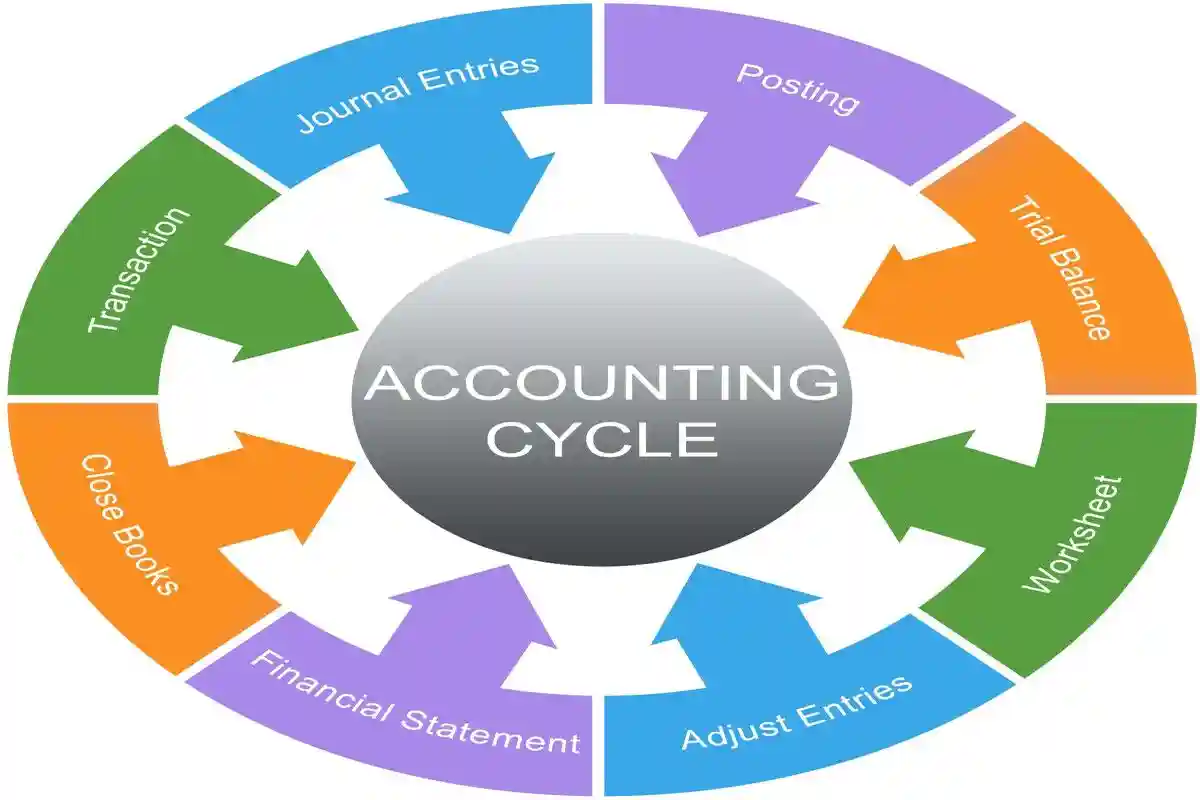Introduction to the Molina Healthcare Class Action Lawsuit
- Molina Healthcare Class Action Lawsuit: The all purchasers or acquirers of Molina Healthcare, Inc. (NYSE: MOH) securities between February 5, 2025 and July 23, 2025, inclusive (the “Class Period”). – captioned Hindlemann v. Molina Healthcare, Inc., No. 25-cv-09461 (C.D. Cal.) – seeks to represent purchasers or acquirers of all purchasers or acquirers of Molina Healthcare, Inc. (NYSE: MOH) securities between February 5, 2025 and July 23, 2025, inclusive (the “Class Period”).
- Basis: The Molina Healthcare Class Action Lawsuit focuses on protecting shareholder interests through robust examination of corporate governance practices and internal controls. The legal process ensures thorough investigation of alleged misleading statements while maintaining strong oversight of company operations. Shareholders affected by potential securities violations have the right to seek recovery through this class action mechanism, which promotes transparency and accountability in corporate conduct.
- Eligibility to Participate: If you purchased or acquired shares of Molina Healthcare, Inc. (NYSE: MOH) securities between February 5, 2025 and July 23, 2025, inclusive (the “Class Period”) and suffered financial losses due to alleged misleading statements and inadequate internal controls, you are likely eligible to participate as a class member in the Molina Healthcare Class Action Lawsuit.
- For a comprehensive evaluation of your legal rights and the lead plaintiff process at no cost, contact Timothy L. Miles at 855-846-6529 or [email protected]
PRE- AND POST-PSLRA STANDARDS FOR SECURITIES FRAUD LITIGATION
| Feature | Pre-PSLRA Standard | Post-PSLRA Standard |
| Motion to dismiss | Based on “notice pleading” (Federal Rule of Civil Procedure 8(a)), making it easier for plaintiffs to survive motions to dismiss. This often led to settlements to avoid costly litigation. | Requires satisfying PSLRA’s heightened pleading standards and the “plausibility” standard from Twombly and Iqbal. Failure to plead with particularity on any element can result in dismissal. |
| Pleading | “Notice pleading” was generally sufficient, though fraud claims under Federal Rule of Civil Procedure 9(b) required particularity for the circumstances of fraud, but intent could be alleged generally. | Each misleading statement must be stated with particularity, explaining why it was misleading. Facts supporting beliefs in claims based on “information and belief” must also be stated with particularity. |
| Scienter | Pleaded broadly; the “motive and opportunity” test was often sufficient to infer intent. | Requires alleging facts creating a “strong inference” of fraudulent intent, which must be at least as compelling as any opposing inference of non-fraudulent intent, as clarified in Tellabs, Inc. v. Makor Issues & Rights, Ltd.. |
| Loss causation | Not a significant pleading hurdle, often assumed if a plaintiff bought at an inflated price. | Requires pleading facts showing the fraud caused the economic loss, often by linking a corrective disclosure to a stock price drop. Dura Pharmaceuticals, Inc. v. Broudo affirmed this. |
| Discovery | Could proceed while a motion to dismiss was pending. | Automatically stayed during a motion to dismiss. |
| Safe harbor for forward-looking statements | No statutory protection. | Protects certain forward-looking statements if accompanied by “meaningful cautionary statements”. |
| Lead plaintiff selection | Often the first investor to file. | Court selects based on a “rebuttable presumption” that the investor with the largest financial interest is the most adequate. |
| Liability standard | For non-knowing violations, liability was joint and several. | For non-knowing violations, liability is proportionate; joint and several liability applies only if a jury finds knowing violation. |
| Mandatory sanctions | Available under Federal Rule of Civil Procedure 11, but judges were often reluctant to impose them. | Requires judges to review for abusive conduct |
Common Types of Securities Fraud
Common Financial Statement Fraud Schemes
| Scheme Type | Description | Example |
| Fictitious Revenue | Recording non-existent sales through false documentation and phantom customers | Creating counterfeit sales contracts or engaging in fraudulent bill-and-hold arrangements that lack economic substance |
| Premature Revenue Recognition | Recognizing revenue before satisfying essential accounting criteria | Accelerating revenue recognition before completing contracted service obligations or product delivery requirements |
| Channel Stuffing | Forcing excessive inventory into distribution channels to artificially inflate sales | Providing unusual incentives to distributors to accept unnecessary inventory levels that exceed reasonable demand |
| Asset Overstatement | Deliberately inflating reported asset values through accounting manipulation | Recording phantom inventory or applying inadequate depreciation to overstate asset carrying values |
| Liability Concealment | Hiding financial obligations through improper accounting treatments | Deliberately understating debt levels or warranty obligations through accounting manipulation |
| Material Omissions | Withholding critical information required for informed investment decisions | Failing to disclose significant related party transactions or contingent liabilities |
| Journal Entry Manipulation | Falsifying accounting records through improper manual adjustments | Making unsupported last-minute entries near reporting deadlines to manipulate results |
Misrepresentation of Financial Information: Companies may deliberately provide false or misleading financial statements to artificially inflate stock prices, often through:
- Revenue recognition manipulation
- Expense underreporting
- Asset value inflation
- Liability concealment
- Cash flow misrepresentation
Omissions of Material Facts: Securities fraud frequently involves failing to disclose critical information that reasonable investors would consider important in making investment decisions. This includes:
- Known regulatory challenges
- Significant operational problems
- Material weaknesses in internal controls
- Pending litigation or investigations
- Adverse business developments
Insider Trading: Corporate executives may engage in unauthorized trading based on material non-public information, violating fundamental principles of market fairness and corporate governance. This can involve:
- Trading ahead of significant announcements
- Tipping off others about non-public information
- Manipulating disclosure timing for personal gain
- Exploiting knowledge of internal control weaknesses
Consequences of Securities Fraud Like in the Molina Healthcare Class Action Lawsuit
The repercussions of securities fraud extend far beyond immediate financial losses, impacting:
- Shareholder value through significant stock price declines
- Market confidence in corporate governance systems
- Company reputation and stakeholder trust
- Regulatory compliance costs and penalties
- Exposure to securities litigation
Companies found engaging in fraudulent practices often face:
- Substantial monetary penalties
- Costly regulatory investigations
- Expensive securities litigation
- Mandatory corporate governance reforms
- Enhanced oversight requirements
THE SECURITIES LITIGATION PROCESS
| Filing the Complaint | A lead plaintiff files a lawsuit on behalf of similarly affected shareholders, detailing the allegations against the company. |
| Motion to Dismiss | Defendants typically file a motion to dismiss, arguing that the complaint lacks sufficient claims. |
| Discovery | If the motion to dismiss is denied, both parties gather evidence, documents, emails, and witness testimonies. This phase can be extensive. |
| Motion for Class Certification | Plaintiffs request that the court to certify the lawsuit as a class action. The court assesses factors like the number of plaintiffs, commonality of claims, typicality of claims, and the adequacy of the proposed class representation. |
| Summary Judgment and Trial | Once the class is certified, the parties may file motions for summary judgment. If the case is not settled, it proceeds to trial, which is rare for securities class actions. |
| Settlement Negotiations and Approval | Most cases are resolved through settlements, negotiated between the parties, often with the help of a mediator. The court must review and grant preliminary approval to ensure the settlement is fair, adequate, and reasonable. |
| Class Notice | If the court grants preliminary approval, notice of the settlement is sent to all class members, often by mail, informing them about the terms and how to file a claim. |
| Final Approval Hearing | The court conducts a final hearing to review any objections and grant final approval of the settlement. |
| Claims Administration and Distribution | A court-appointed claims administrator manages the process of sending notices, processing claims from eligible class members, and distributing the settlement funds. The distribution is typically on a pro-rata basis based on recognized losses. |
The Role of Regulatory Bodies
Regulatory authorities, particularly the Securities and Exchange Commission (SEC), play a vital role in:
- Investigating potential securities fraud
- Enforcing securities laws and regulations
- Monitoring corporate governance practices
- Assessing internal control adequacy
- Protecting investor interests
The SEC maintains broad investigative powers and can impose significant penalties, including:
- Monetary fines
- Trading suspensions
- Officer and director bars
- Mandatory corporate reforms
- Ongoing compliance monitoring
Importance of Compliance
Maintaining robust compliance programs proves essential for:
- Preventing securities fraud
- Strengthening internal controls
- Enhancing corporate governance
- Reducing litigation risk
- Protecting shareholder interests
Companies must prioritize:
- Accurate financial reporting
- Timely material disclosures
- Effective internal controls
- Strong corporate governance
- Regular compliance training
Protecting Your Investments
Investors must remain vigilant in safeguarding their investments through:
- Regular portfolio monitoring
- Due diligence reviews
- Corporate governance assessment
- Internal control evaluation
- Securities litigation awareness
Effective protection strategies include:
- Analyzing financial statements
- Monitoring corporate disclosures
- Evaluating management credibility
- Assessing governance structures
- Understanding legal remedies
Strategies for Investor Protection in the Molina Healthcare Class Action Lawsuit
Here are comprehensive strategies investors should consider to protect their interests and navigate potential securities fraud:
Conduct Thorough Due Diligence
Before making any investment decisions, shareholders must conduct extensive research focusing on:
- Comprehensive analysis of the company’s financial statements, paying special attention to revenue recognition practices and internal controls
- Detailed evaluation of management’s track record in maintaining strong corporate governance
- Assessment of the company’s regulatory compliance history and any past securities litigation
- Review of analyst reports and independent research highlighting potential red flags
- Examination of the company’s corporate governance structure, including board independence and audit committee effectiveness
Warning signs that warrant further investigation include:
- Frequent changes in executive leadership or board composition
- History of regulatory violations or securities litigation
- Weak or ineffective internal controls
- Inconsistent financial reporting patterns
- Unusual related-party transactions
Monitor Company Communications and Disclosures in the Molina Healthcare Class Action Lawsuit
Maintaining vigilant oversight of company communications proves essential:
- Carefully review all SEC filings, particularly Forms 10-K, 10-Q, and 8-K
- Analyze earnings calls transcripts and management presentations
- Track company press releases and public statements
- Monitor regulatory investigations or enforcement actions
- Follow securities litigation developments affecting the company
Pay particular attention to:
- Changes in accounting policies or practices
- Modifications to internal controls
- Corporate governance updates
- Management’s discussion of operational challenges
- Disclosure of material risks or uncertainties
Implement Portfolio Diversification Strategies in the Molina Healthcare Class Action Lawsuit
Effective diversification remains crucial for risk management:
- Spread investments across multiple sectors and industries
- Balance holdings between growth and value stocks
- Consider geographic diversification
- Maintain appropriate position sizes
- Regular portfolio rebalancing
Key diversification principles include:
- Avoiding over-concentration in single companies
- Understanding sector-specific risks
- Monitoring correlation between holdings
- Maintaining liquidity reserves
- Regular risk assessment and rebalancing
Molina Healthcare provides critical managed healthcare services focused on serving low-income families and individuals through government-sponsored programs including Medicaid, Medicare, and state insurance marketplaces. The company’s business model relies heavily on proper internal controls and corporate governance to ensure accurate financial reporting and compliance with healthcare regulations.
The Lead Plaintiff Deadline in the Molina Healthcare Class Action Lawsuit
- Lead plaintiff motions for the Molina Healthcare Class Action Lawsuit must be filed with the court no later than December 2, 2025.
- This securities litigation alleges that the company made misleading statements about its internal controls and financial condition during the Class Period.
- When a securities class action is filed, shareholders have important rights and deadlines to be aware of:
The Eligibility Criteria for Lead Plaintiff Appointment in the Molina Healthcare Class Action Lawsuit
- To be eligible for appointment as the lead plaintiff in the Molina Healthcare Class Action Lawsuit, an investor must meet several key criteria established under securities laws to protect shareholder interests:
- The investor must have purchased Molina Healthcare stock during the Class Period
- The investor must have suffered financial losses related to their investment
- The investor must be willing to represent the interests of all class members
- The investor must have significant financial interest in the litigation outcome
- The investor must meet certain legal requirements for serving as lead plaintiff
- It is crucial to note that both domestic and international investors who meet these criteria are eligible to seek appointment as the lead plaintiff in the class action lawsuit, as courts have consistently recognized the rights of non-U.S. investors in securities litigation. The lead plaintiff plays a vital role in overseeing the Molina Healthcare Class Action Lawsuit and protecting shareholder interests through proper corporate governance.
PHASES OF THE MOLINA HEALTHCARE CLASS ACTION LAWSUIT
| Phase | Description |
| Mediation/Negotiation | Before a settlement is finalized, the plaintiff’s attorneys and the defendants’ legal teams typically engage in extensive negotiations, often with a neutral, third-party mediator, to agree on the terms of a potential settlement that addresses internal controls deficiencies. |
| Preliminary court approval | After reaching a settlement agreement, the parties must submit it to the court for preliminary approval. The court carefully reviews the fairness of the proposed terms, including corporate governance reforms, before proceeding. |
| Notice to class members | Following preliminary approval, a detailed court-approved notice is distributed to all potential class members, outlining the settlement terms, eligibility requirements, and the proposed plan for allocating damages. |
| Claims administration | A court-appointed administrator manages the settlement fund and claims process. Class members must submit documentation proving their losses to receive compensation. |
| Final court approval | After processing claims and meeting notice requirements, the court holds a final hearing to ensure the settlement is fair and reasonable for the entire class. |
| Distribution of funds | Upon final approval, the claims administrator distributes settlement funds to eligible claimants proportionally based on their recognized losses. Multiple distribution rounds may occur. |
| Case termination | The securities litigation concludes after complete distribution of the settlement funds and implementation of any required corporate governance reforms. |
What Is the Securities Act of 1934?
- The Securities Exchange Act of 1934 represents cornerstone legislation enacted to regulate securities markets and protect investors through requirements for internal controls and corporate governance standards. This law provides the foundation for many modern securities litigation claims involving misleading statements about company operations and financial condition.
- Overall, the Securities Act of 1934 plays a pivotal role in maintaining market integrity and investor confidence through robust internal controls and corporate governance requirements. The Act establishes comprehensive frameworks for securities litigation and regulatory enforcement actions when companies make misleading statements or fail to maintain adequate controls. These provisions help ensure transparency and accountability in financial markets while protecting shareholder interests through various enforcement mechanisms.
What Damages Am I Entitled To?
- In securities class action lawsuits like the Molina Healthcare Class Action Lawsuit, plaintiff damages are typically calculated based on out-of-pocket losses resulting from alleged misstatements or omissions about internal controls and corporate governance practices.
- These calculations consider factors like the artificial inflation in stock price during the Class Period and the subsequent price declines when the truth is revealed through corrective disclosures. Expert analysis helps quantify damages by examining market efficiency and loss causation.
Investor Rights
- Investors impacted by the Molina Healthcare Class Action Lawsuit have specific legal rights established under securities laws to protect shareholder interests. These rights include the ability to seek appointment as lead plaintiff, participate as a class member, object to settlement terms, opt out of the class, and submit claims for damages. Understanding these rights is essential for shareholders evaluating their options for pursuing recovery through securities litigation.
- Investors who suffered losses related to the Molina Healthcare Class Action Lawsuit can pursue several strategic options based on their specific circumstances and objectives. They may choose to: 1) actively participate by seeking lead plaintiff appointment, 2) remain passive class members, 3) opt out and pursue individual claims, or 4) object to settlement terms. Each option carries distinct advantages and considerations regarding control, timing, and potential recovery.
The Class Period in a Securities Class Action
In a securities class action, such as the Molina Healthcare Class Action Lawsuit class action lawsuit:
- The class period refers to the specific time frame during which the alleged fraudulent activity occurred. It is the period in which the plaintiffs claim to have suffered financial losses due to misrepresentations or omissions made by the defendants.
- The class period is crucial in determining who can be included in the class and seek damages.
- It typically starts when the alleged fraud was first publicly disclosed or when investors should have reasonably become aware of it.
- The class period usually ends when the alleged fraud is revealed to the public or when the plaintiffs file a lawsuit.
- The length of the class period can vary depending on the specific circumstances of each case.
What Damages Am I Entitled To?
- In a securities fraud case, the plaintiff’s damages are typically calculated as out-of-pocket losses.
- These losses are expressed as the difference between:
- the price at which the stock was sold and the price at which the stock would have been sold absent any artificial inflation caused by the defendant’s alleged misrepresentations or omissions.
Gathering and Organizing Relevant Evidence
- In a securities class action lawsuit like the Molina Healthcare Class Action Lawsuit, evidence is the cornerstone of building a compelling case. For affected shareholders, gathering and organizing all relevant financial and investment documentation is a crucial first step.
- The evidence will help substantiate claims of corporate misconduct and demonstrate the financial harm you may have suffered.
What documents do you need?
- Company documents: Gather all press releases, financial statements (like 10-K and 10-Q reports), and analyst reports related to Molina Healthcare that you have.
- Your investment history: Meticulously document your investment history with Molina Healthcare, including:
- Dates of all stock purchases and sales
- The quantities of shares bought or sold
- The prices of each transaction
- Communications: Compile any emails or other communications that shed light on the alleged wrongdoing.
- Brokerage records: Collect all relevant brokerage statements and confirmation slips.
How to organize your records
- Start a file: Create a comprehensive file of all relevant documents.
- Categorize and date: Organize your documents by type and date. This will help your legal counsel easily retrieve and review information.
- Digital copies: If possible, keep digital copies of all documents in a secure location.
Staying Informed: Monitoring Case Developments
- In a securities class action lawsuit, keeping up with case developments is crucial for shareholders. As the Molina Healthcare Class Action Lawsuit moves forward, new information can significantly impact the strategy and potential outcomes.
- Here’s how to stay informed and well-positioned throughout the process:
Rely on communication with your legal team
- Understanding the implications of new information, such as court rulings.
- Assessing the potential risks and benefits of different courses of action.
- Making informed decisions, such as whether to accept a settlement offer.
Follow news and market developments
- Gain insights into market trends related to Molina Healthcare Class Action Lawsuit.
- Understand broader regulatory changes that may influence the case.
- Better anticipate shifts in the legal and financial landscape.
Knowledge is power
Rights of Investors in the Molina Healthcare Class Action Lawsuit
Investors affected by the Molina Healthcare Class Action Lawsuit possess specific rights that they can exercise. Understanding these rights is vital for anyone considering involvement in the lawsuit.
Right to Information in the Molina Healthcare Class Action Lawsuit
- Investors have the right to receive accurate and timely updates regarding the Molina Healthcare Class Action Lawsuit.
- This includes information on the case’s progress, potential settlements, and any necessary actions they may need to undertake.
Right to Participate in the Molina Healthcare Class Action Lawsuit
- Affected investors have the right to join the Molina Healthcare Class Action Lawsuit.
- This allows them to collaborate with other investors in seeking compensation for their losses without the burden of filing individual lawsuits.
Right to Legal Representation in the Molina Healthcare Class Action Lawsuit
- Investors can seek legal counsel to navigate the complexities of the Molina Healthcare Class Action Lawsuit.
- Legal professionals can provide guidance and support throughout the process.
- If you suffered substantial losses and wish to serve as lead plaintiff of the Molina Healthcare Class Action Lawsuit, or just have general questions about you rights as a shareholder, please contact attorney Timothy L. Miles of the Law Offices of Timothy L. Miles, at no cost, by calling 855/846-6529 or via e-mail at [email protected].
Options for Investors in the Molina Healthcare Class Action Lawsuit
Investors facing losses due to the Molina Healthcare Class Action Lawsuit have several options available to them. Each option carries its own implications and potential outcomes.
Joining the Class Action
- One of the most straightforward options for investors is to join the Molina Healthcare Class Action Lawsuit.
- By doing so, they can collectively pursue compensation for their losses without the need for individual litigation.
Filing an Individual Claim
- In certain situations, investors may opt to file individual claims instead of joining the Molina Healthcare Class Action Lawsuit.
- This option may be appropriate for those who believe their losses are significant enough to warrant separate legal action.
Seeking Legal Advice
- Consulting with a legal professional experienced in securities law can provide investors with insights into their best course of action.
- Legal experts can help assess the merits of individual claims versus joining the Molina Healthcare Class Action Lawsuit.
The Role of Law Firms in the Molina Healthcare Class Action Lawsuit
- Law firms play a crucial role in the Molina Healthcare Class Action Lawsuit.
- They provide the necessary legal experience and representation for investors seeking to recover their losses.
Selecting a Law Firm in the Molina Healthcare Class Action Lawsuit
- Investors have the option to choose a law firm that practices securities fraud cases.
- A reputable firm can offer valuable insights and increase the likelihood of a favorable outcome.
- If you suffered substantial losses and wish to serve as lead plaintiff of the Molina Healthcare Class Action Lawsuit, or just have general questions about you rights as a shareholder, please contact attorney Timothy L. Miles of the Law Offices of Timothy L. Miles, at no cost, by calling 855/846-6529 or via e-mail at [email protected].
FREQUENTLY ASKED QUESTIONS ABOUT THE MOLINA HEALTHCARE CLASS ACTION LAWSUIT
What initiated the Molina Healthcare class action lawsuit?
The Molina Healthcare class action lawsuit was initiated after investors alleged the company made misleading statements regarding its internal controls, corporate governance practices, and overall financial condition. The lawsuit claims these misrepresentations artificially inflated the stock price during the Class Period, causing investor losses when the truth emerged through corrective disclosures.
How can I join the Molina Healthcare class action lawsuit?
Investors who purchased shares during the specified Class Period and experienced losses are automatically considered class members without taking immediate action. However, those considering lead plaintiff appointment must file motions by the court-established deadline. This role requires meeting specific legal criteria and willingness to represent the class’s interests.
What are the potential benefits of a Molina Healthcare class action lawsuit?
Securities class actions provide an efficient mechanism for investors to collectively pursue recovery while promoting corporate accountability through improved internal controls and governance reforms. These lawsuits help ensure companies maintain proper oversight and make accurate disclosures while providing compensation for losses caused by alleged misconduct.
How long will the Molina Healthcare class action lawsuit take to resolve?
Securities litigation timelines vary significantly based on case complexity, settlement negotiations, and court proceedings. While some cases resolve within 18-24 months, others may extend several years, particularly if multiple motions or appeals occur. The process typically involves various phases including lead plaintiff selection, motion practice, discovery, class certification, and potential settlement approval.
If you experienced substantial losses and wish to serve as lead plaintiff in the Molina Healthcare class action lawsuit, or have questions about shareholder rights and internal controls requirements, please contact attorney Timothy L. Miles at the Law Offices of Timothy L. Miles for a free consultation by calling 855-846-6529 or emailing [email protected] (24/7/365).
Contact Timothy L. Miles Today About a Molina Healthcare Class Action Lawsuit
If you suffered substantial losses and wish to serve as lead plaintiff of the Molina Healthcare class action lawsuit, or just have general questions about you rights as a shareholder, please contact attorney Timothy L. Miles of the Law Offices of Timothy L. Miles, at no cost, by calling 855/846-6529 or via e-mail at [email protected]. (24/7/365).
Timothy L. Miles, Esq.
Law Offices of Timothy L. Miles
Tapestry at Brentwood Town Center
300 Centerview Dr. #247
Mailbox #1091
Brentwood,TN 37027
Phone: (855) Tim-MLaw (855-846-6529)
Email: [email protected]
Website: www.classactionlawyertn.com
Facebook Linkedin Pinterest youtube
Visit Our Extensive Investor Hub: Learning for Informed Investors








